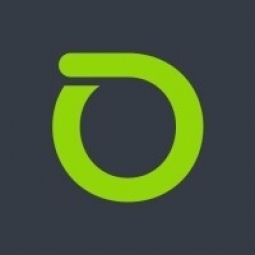公司规模
Large Corporate
地区
- America
国家
- United States
产品
- nGeniusONE Service Assurance platform
- InfiniStreamNG software appliances
- vSTREAM virtual appliances
- vSTREAM Embedded virtual appliances
- Visibility as a Service (VaaS) subscription
技术栈
- Cloud Computing
- Data Analytics
- Network Monitoring
实施规模
- Enterprise-wide Deployment
影响指标
- Customer Satisfaction
- Productivity Improvements
- Cost Savings
技术
- 基础设施即服务 (IaaS) - 云计算
- 分析与建模 - 数据即服务
适用行业
- 医疗保健和医院
适用功能
- 商业运营
- 人力资源
用例
- 远程资产管理
- 预测性维护
- 实时定位系统 (RTLS)
服务
- 云规划/设计/实施服务
- 数据科学服务
- 系统集成
关于客户
这家历史悠久的美国医疗保健和保险公司为 1000 多万客户提供多样化的服务,包括遍布众多地区的 HMO 网络。近年来,通过有机增长和近期收购实现的稳步商业进步为公司奠定了长期行业成功的基础。在扩张过程中,该公司超过 25,000 名员工继续专注于继续改善向客户提供的福利,其中包括旨在使信息和服务访问比以往更加轻松的客户门户和 Web 应用程序。该公司还在下一代信息技术 (IT) 以及数据分析方面进行战略投资,这些技术正在所有业务方面使用,以改善患者护理和运营效率。
挑战
该公司的战略 IT 计划包括实施更灵活、更广阔的“叶脊”网络设计,以降低整个企业的性能延迟。除了这些网络变化之外,该公司还决定迁移数据中心运营,包括从一个位置迁移到另一个设施,并使用 Equinix 主机托管站点开设第二个数据中心。对于该公司的长期 IT 团队来说,所有这些业务增长意味着涉及更多的网络流量元素、业务服务和新供应商,这增加了对实时服务保证和性能管理的需求。虽然 IT 已最大限度地延长了其传统网络监控工具的生命周期,但该团队也知道,新的网络流量增长和数据中心复杂性将超出该解决方案的功能。此外,语音团队还寻求扩展数据保留功能以遵守新的法律指令,但 IT 团队对添加更多设备和资本支出以满足这些要求持谨慎态度。
解决方案
在对可能的解决方案进行全面搜索和评估后,该公司选择了 NETSCOUT® 智能数据技术,以便清晰、完整、端到端地查看其新数据中心位置和新的 Equinix 托管设施。新安装的 nGeniusONE 服务保证平台为其 IT 用户提供了更精细、更智能的分析功能,帮助他们主动管理实时网络、应用程序和统一通信性能。nGeniusONE 平台使用安装在新公司数据中心和 CSP 上的 InfiniStreamNG (ISNG) 软件设备生成的智能数据,在 ISNG 内运行的 NETSCOUT Adaptive Service Intelligence™ (ASI) 技术在源头持续监控和处理公司的线路数据,以帮助在问题发生时对其进行分类,并提高他们分析性能趋势以进行主动规划的能力。该公司通过在虚拟化服务器环境中部署 NETSCOUT vSTREAM 和 vSTREAM Embedded(vSTREAM-EMB)虚拟设备,获得了面向客户的 Web 和移动应用程序的可见性,这些虚拟设备与 nGeniusONE 结合使用,监控东西向流量以解决服务器到服务器的性能挑战。
运营影响
数量效益

Case Study missing?
Start adding your own!
Register with your work email and create a new case study profile for your business.
相关案例.

Case Study
Hospital Inventory Management
The hospital supply chain team is responsible for ensuring that the right medical supplies are readily available to clinicians when and where needed, and to do so in the most efficient manner possible. However, many of the systems and processes in use at the cancer center for supply chain management were not best suited to support these goals. Barcoding technology, a commonly used method for inventory management of medical supplies, is labor intensive, time consuming, does not provide real-time visibility into inventory levels and can be prone to error. Consequently, the lack of accurate and real-time visibility into inventory levels across multiple supply rooms in multiple hospital facilities creates additional inefficiency in the system causing over-ordering, hoarding, and wasted supplies. Other sources of waste and cost were also identified as candidates for improvement. Existing systems and processes did not provide adequate security for high-cost inventory within the hospital, which was another driver of cost. A lack of visibility into expiration dates for supplies resulted in supplies being wasted due to past expiry dates. Storage of supplies was also a key consideration given the location of the cancer center’s facilities in a dense urban setting, where space is always at a premium. In order to address the challenges outlined above, the hospital sought a solution that would provide real-time inventory information with high levels of accuracy, reduce the level of manual effort required and enable data driven decision making to ensure that the right supplies were readily available to clinicians in the right location at the right time.

Case Study
Gas Pipeline Monitoring System for Hospitals
This system integrator focuses on providing centralized gas pipeline monitoring systems for hospitals. The service they provide makes it possible for hospitals to reduce both maintenance and labor costs. Since hospitals may not have an existing network suitable for this type of system, GPRS communication provides an easy and ready-to-use solution for remote, distributed monitoring systems System Requirements - GPRS communication - Seamless connection with SCADA software - Simple, front-end control capability - Expandable I/O channels - Combine AI, DI, and DO channels

Case Study
Driving Digital Transformations for Vitro Diagnostic Medical Devices
Diagnostic devices play a vital role in helping to improve healthcare delivery. In fact, an estimated 60 percent of the world’s medical decisions are made with support from in vitrodiagnostics (IVD) solutions, such as those provided by Roche Diagnostics, an industry leader. As the demand for medical diagnostic services grows rapidly in hospitals and clinics across China, so does the market for IVD solutions. In addition, the typically high cost of these diagnostic devices means that comprehensive post-sales services are needed. Wanteed to improve three portions of thr IVD:1. Remotely monitor and manage IVD devices as fixed assets.2. Optimizing device availability with predictive maintenance.3. Recommending the best IVD solution for a customer’s needs.

Case Study
HaemoCloud Global Blood Management System
1) Deliver a connected digital product system to protect and increase the differentiated value of Haemonetics blood and plasma solutions. 2) Improve patient outcomes by increasing the efficiency of blood supply flows. 3) Navigate and satisfy a complex web of global regulatory compliance requirements. 4) Reduce costly and labor-intensive maintenance procedures.

Case Study
Cloud-based healthcare solution for Royal Philips
Royal Philips wanted to launch its cloud-based healthcare solution HealthSuite Digital Platform in China to deliver services to help cope with challenges related to urbanization and population growth. Philips wanted to achieve this goal by combining mobile, cloud computing and big data technologies. To bring this platform and product to market, Philips required cloud computing and local technical service capabilities in China, in addition to a flexible IT infrastructure that could handle user requests.








